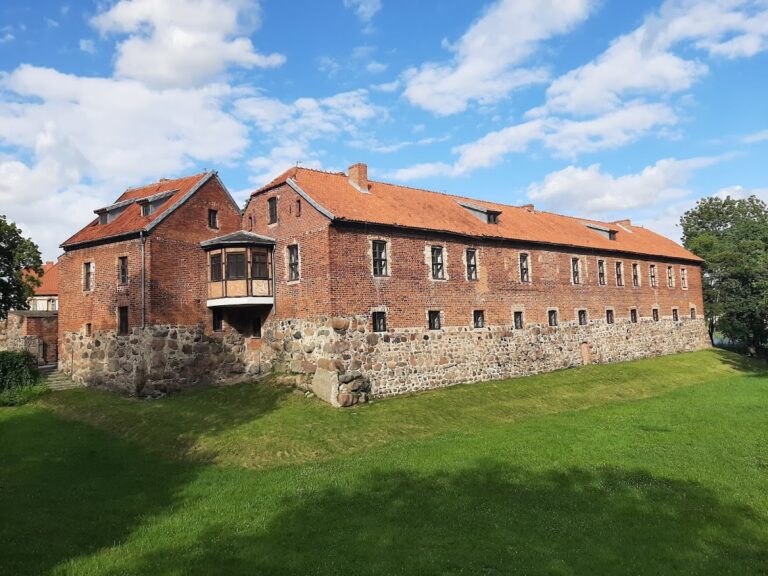Castle in Dzierzgoń: A Teutonic Order Fortress in Poland
Visitor Information
Google Rating: 4.2
Popularity: Low
Google Maps: View on Google Maps
Country: Poland
Civilization: Unclassified
Remains: Military
History
The Castle in Dzierzgoń is located in the municipality of Dzierzgoń, Poland. It was originally established by the Teutonic Order, a medieval Catholic military order active in the Baltic region during the 13th century. The site chosen for construction stood on the grounds of a former Prussian fortress, reflecting the strategic importance of this location early on.
Construction of the castle began in 1248, initially using wood and earth materials. Just a year after its founding, in 1249, the Castle in Dzierzgoń hosted the signing of the Christburg Peace treaty. This agreement established relatively moderate conditions for the native Prussian population, requiring their acceptance of the Teutonic Order’s secular rule along with Christianity, while allowing them to maintain certain rights and freedoms.
Starting around 1260, the castle was rebuilt using stone, marking a significant upgrade in strength and durability. It served as a key fortress positioned near the entrance to the Prussian Oberland, an elevated region important for military control. From 1309 onward, the castle became the residence of the Grand Draper (Obersttrappier) of the Teutonic Order, an official responsible for managing clothing supplies across the Order’s territories. The first commander, or Komtur, of the castle was Heinrich Stange.
Throughout its active history, the castle experienced considerable military conflict. It survived sieges during both the First and Second Prussian uprisings. Notably, Polish forces occupied the castle from 1404 until 1410, a period which ended with its capture and subsequent burning by Polish troops in 1414. By 1456, much of the castle had been dismantled, signaling its decline as a military stronghold.
During the 16th and 17th centuries, the castle was in ruins, as evidenced by period artworks dating from 1584 and 1687. Over time, materials from the remaining walls were repurposed; in the 17th century, bricks from the dilapidated structure were used to build a nearby Reformed church. By the 19th century, the ruins were transformed into a park, and in the 1930s, a water tower was erected on the hilltop, highlighting the site’s continuing adaptation within the local landscape.
Remains
The castle in Dzierzgoń was built primarily from brick and strategically positioned on a hill north of the town, taking advantage of the elevated terrain for natural defense and commanding views. Archaeological work has uncovered the foundations of two wings forming an obtuse angle, with a tower situated at the end of the shorter northern wing. This irregular layout identifies the castle as belonging to an early generation of Teutonic Order fortresses, distinct from later castles which featured more standardized, fortress-like plans.
At the base of the hill, near what is now a street, fragments of a stone retaining wall have been preserved. This wall likely served to stabilize the hillside and protect the castle’s approach. The visible remains at the site today mainly consist of these foundation outlines and ruins, giving insight into the castle’s original size and shape but lacking fine architectural details or decorative elements.
In the 20th century, the site experienced additional development with the construction of a water tower atop the hill where the castle once stood. Though a modern feature, the tower marks the continued historical significance of the location within the community.
Excavations have also revealed an old road leading to the castle, illustrating how access was organized in medieval times. Together, these features contribute to a layered understanding of the castle’s physical presence, its defensive role, and its gradual transformation over centuries.










